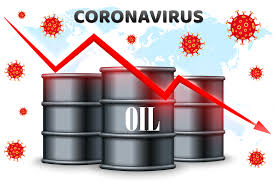
Economic analysts warned that New Mexico could be unable to rely on its oil and gas industry as the market continues to struggle amid the COVID-19 pandemic.
Lease fees, royalty payment and taxes from oil and gas operations accounted for about 30 percent of the state’s budget in recent years, per a recent study from the Institute for Energy Economics (IEEFA) and Financial Analysis reported the Carlsbad Current-Argus.
The industry also provided about a quarter of the state’s operations budget last year, the study read.
But with the price per barrel of oil declining — before the pandemic a 22014 boom busted about a year later — the financial support the industry offers New Mexico could be weakening, the study read.
Earlier this year, lawmakers faced a $400 million shortfall in the state’s budget which many attributed to declines in the oil and gas markets.
As of Tuesday, domestic crude oil was trading at about $41 per barrel, per data from Nasdaq, after a historic plummet in April when the pandemic took hold in the U.S. to less than $0 per barrel for the first time in history.
Before the pandemic, oil was priced at about $55 to $60 per barrel, with the study reporting an average of about $48 per barrel between 2015 and 2019.
Between 2010 and 2014, the study reported the average price of oil was about $86 per barrel.
That meant shrinking operations in New Mexico where oil and gas development is centered around the Permian Basin in the southeast, with Baker Hughes reporting an average of 45 active rigs so far in October, marking a drop of 67 rigs or a 60 percent decrease since October 2019.
Most of those rigs were lost in recent months as the health crisis grew, after the year started off strong at an average of 106 rigs in January and steadily declined through the spring and summer.
Co-author of the IEEFA report Tom Sanzillo said estimates show the average price of oil will remain as low as $43 per barrel through 2022.
“It’s an improvement over the historic lows hit in April 2020, but still far below what’s needed to return New Mexico to robust fiscal health,” he said. “The situation is unlikely to improve anytime soon.”





